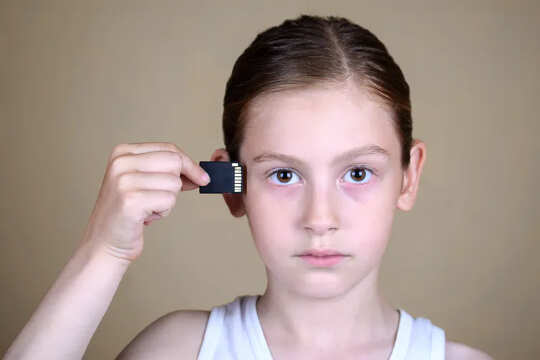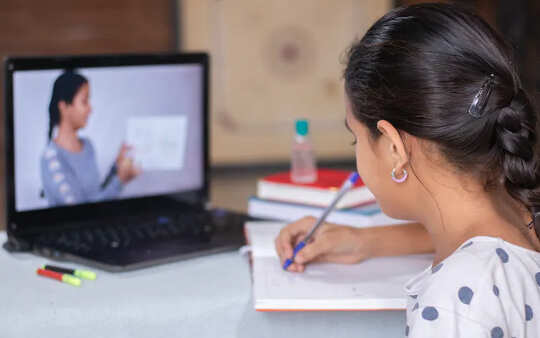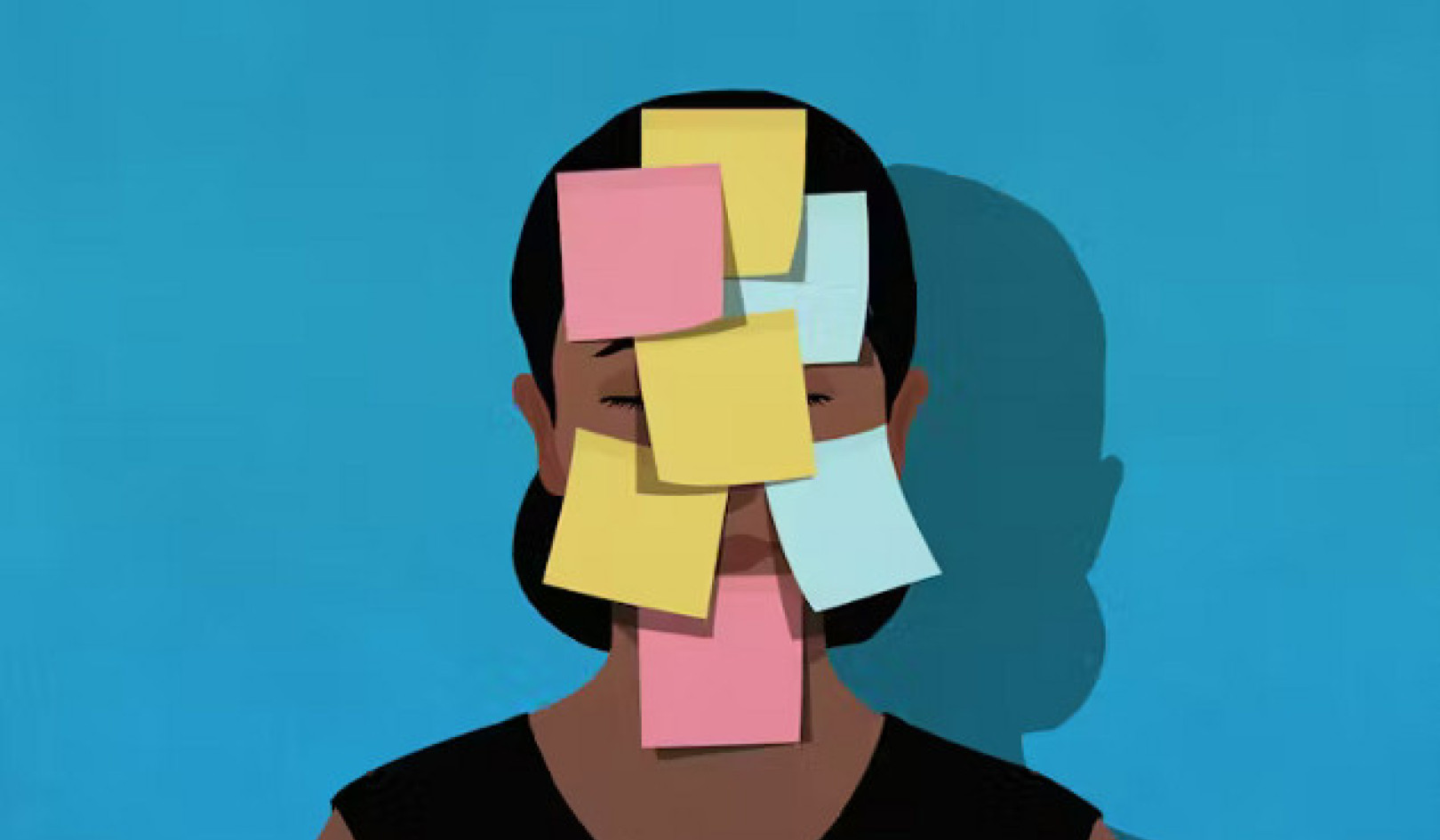Research during the first phase of remote teaching in Victoria reported some students found the workload “too high”, missed interactions with peers, felt their thinking ability was impaired, and reported a difficulty coping with study and life more generally.
All these factors impact on students’ sense of well-being. While learning remotely, some children experienced heightened anxiety, stress and other emotional reactions such as depression.
These reactions are not always a response to the teaching itself. Generally, schools and teachers took care to prepare relevant, appropriate learning and teaching materials. Issues like a lack of focus and heightened anxiety could also be the result of a difficulty learning in an alternative setting.
These issues are consistent with students lacking the autobiographical episodic memory needed to guide successful learning in the remote context. Their autobiographic memory, which contains the association that school is a place of learning, may not apply to the home. However, we can train it to.
What is autobiographical memory?
Our autobiographical episodic memory is the brain’s record of our experiences. It includes what we’ve done, the contexts in which we did it and how we did it. It also contains the feelings we link with events and how motivated we were.
We use this memory continually in our lives. It tells us what to expect when we go into a new bar or coffee shop for the first time, how to cope when an appliance at home breaks down and how to organise ourselves in a social interaction.
Students who have attended school have an autobiographical episodic memory of what happens in a classroom. Their experiences include interacting with peers, responding to directions from their teachers about how to direct their learning activity, following routines and schedules such as doing particular activities at specific times, and behaving in particular ways.
The experiences also include a range of signals, supports and interactions such as the body language, eye contact, and speaking tones used by teachers and peers — as well as the overall classroom atmosphere.
These experiences are stored in students’ autobiographical episodic memory. They are recalled whenever the student is in the classroom context and direct and focus the learning activity. They operate in addition to, and in parallel with, the the actual teaching and the content.
 Autobiographical memory is our record of experiences. Shutterstock
Autobiographical memory is our record of experiences. Shutterstock
Students also have stored, in their episodic memory, their experiences at home. This is their record of how they live with their family, what to do and how to behave acceptably at home, how to be organised in the home, how to get around obstacles and solve problems in the home situation and also what to expect.
During the period of remote learning, students, for the large part, had teaching materials prepared for them. But many still needed the systems and supports provided in the classroom context. These students knew what was missing but were likely unable to compensate for it by spontaneously adapting their episodic memory to match the changed context.
Other students found remote teaching a valuable experience. It’s possible these students had more adaptable episodic memories at home. They likely valued being able to self-organise and manage their learning schedules. They may have enjoyed having the opportunity to plan their day and work at their own pace.
We don’t know for sure the differences between the learning profiles of those who were and weren’t able to adapt to the changed context; but we can assume episodic memory could play a part in the different experiences students had.
So, why does this matter?
Teachers and schools have put a lot of work into designing teaching and learning materials students could use in their homes. Students’ reports suggest these materials weren’t adequate for all students to adapt their classroom experiences to fit the home environment.
As a result, many students would not have formed positive or successful episodic memories of learning at home.
The current phase of remote teaching has come to an end for Australia. However, we may see more students studying from home periodically, as schools shut due to outbreaks in the future. Or it could be necessary in Australia in the event of a third wave.
 More students could be learning from home if outbreaks continue. Shutterstock
More students could be learning from home if outbreaks continue. Shutterstock
Remote teaching could help students build the episodic memory they need for remote learning. Teachers can do this by helping students recognise the learning supports in the classroom and form matching ones in the home. It is also useful to put in place the conditions for successful learning experiences at home.
Here are some ways they could do this:
Teachers can guide students to recognise what helps them learn in the classroom. They can do this by
-
becoming aware of supports such as having regular designated times for doing particular activities
-
having a learning task broken into smaller steps
-
avoiding distractors or working on a task to completion.
They can then ask the students to suggest how they could have matching supports in their home context. For example, they can encourage students to
-
prepare a study schedule
-
break a task into small steps and work on each
-
identify possible distractors at home and suggest how they can manage them.
When starting a task remotely, teachers can ask students to recall how they did similar activities in the classroom. Students can learn to ask themselves: How did I do similar tasks in the past? What will the outcome look like? What will I do first and then second and last? This could help students transfer their classroom experiences to their home.
Students often have more successful home learning experiences when they have been taught to monitor their progress as they work through a task. These experiences add to their episodic memory. Teachers can encourage them to say what they know now that they didn’t know earlier.
Experiences that record what happened in a certain place and time are stored in images. When given a learning task during remote teaching, students can also be encouraged to visualise how they will complete it.
For example, if they need to write a paragraph about a character in a novel, the teacher can ask students to visualise the character in particular contexts, recall words that describe the character’s attributes, compose sentences about them and organise their understanding around main ideas. This gives students a “virtual experience” of the learning activity that includes a pathway to task completion.
Many students will, from now on, need to have the ability to learn remotely. This is even true independent of COVID, and applies to studying for exams at home or doing homework. Teachers and parents should be sensitive to the fact autobiographic episodic memory has a role to play in successful learning.
About the Author
John Munro, Professor, Faculty of Education and Arts, Australian Catholic University
This article is republished from The Conversation under a Creative Commons license. Read the original article.

Related Books:
Here are 5 non-fiction books on parenting that are currently Best Sellers on Amazon.com:The Whole-Brain Child: 12 Revolutionary Strategies to Nurture Your Child's Developing Mind
by Daniel J. Siegel and Tina Payne Bryson
This book provides practical strategies for parents to help their children develop emotional intelligence, self-regulation, and resilience using insights from neuroscience.
Click for more info or to order
No-Drama Discipline: The Whole-Brain Way to Calm the Chaos and Nurture Your Child's Developing Mind
by Daniel J. Siegel and Tina Payne Bryson
The authors of The Whole-Brain Child offer guidance for parents to discipline their children in a way that promotes emotional regulation, problem-solving, and empathy.
Click for more info or to order
How to Talk So Kids Will Listen & Listen So Kids Will Talk
by Adele Faber and Elaine Mazlish
This classic book provides practical communication techniques for parents to connect with their children and foster cooperation and respect.
Click for more info or to order
The Montessori Toddler: A Parent's Guide to Raising a Curious and Responsible Human Being
by Simone Davies
This guide offers insights and strategies for parents to implement Montessori principles at home and foster their toddler's natural curiosity, independence, and love of learning.
Click for more info or to order
Peaceful Parent, Happy Kids: How to Stop Yelling and Start Connecting
by Dr. Laura Markham
This book offers practical guidance for parents to shift their mindset and communication style to foster connection, empathy, and cooperation with their children.
























